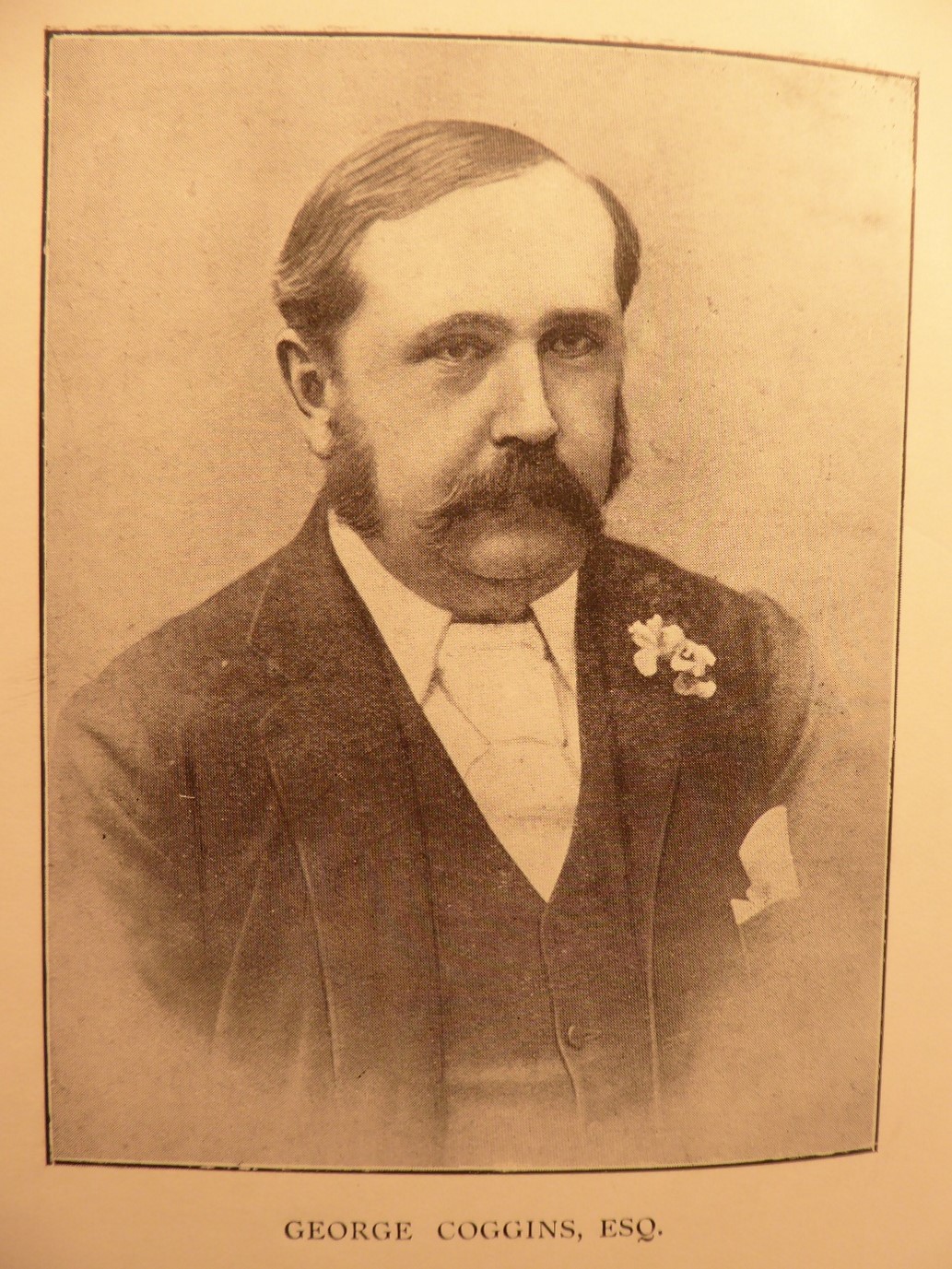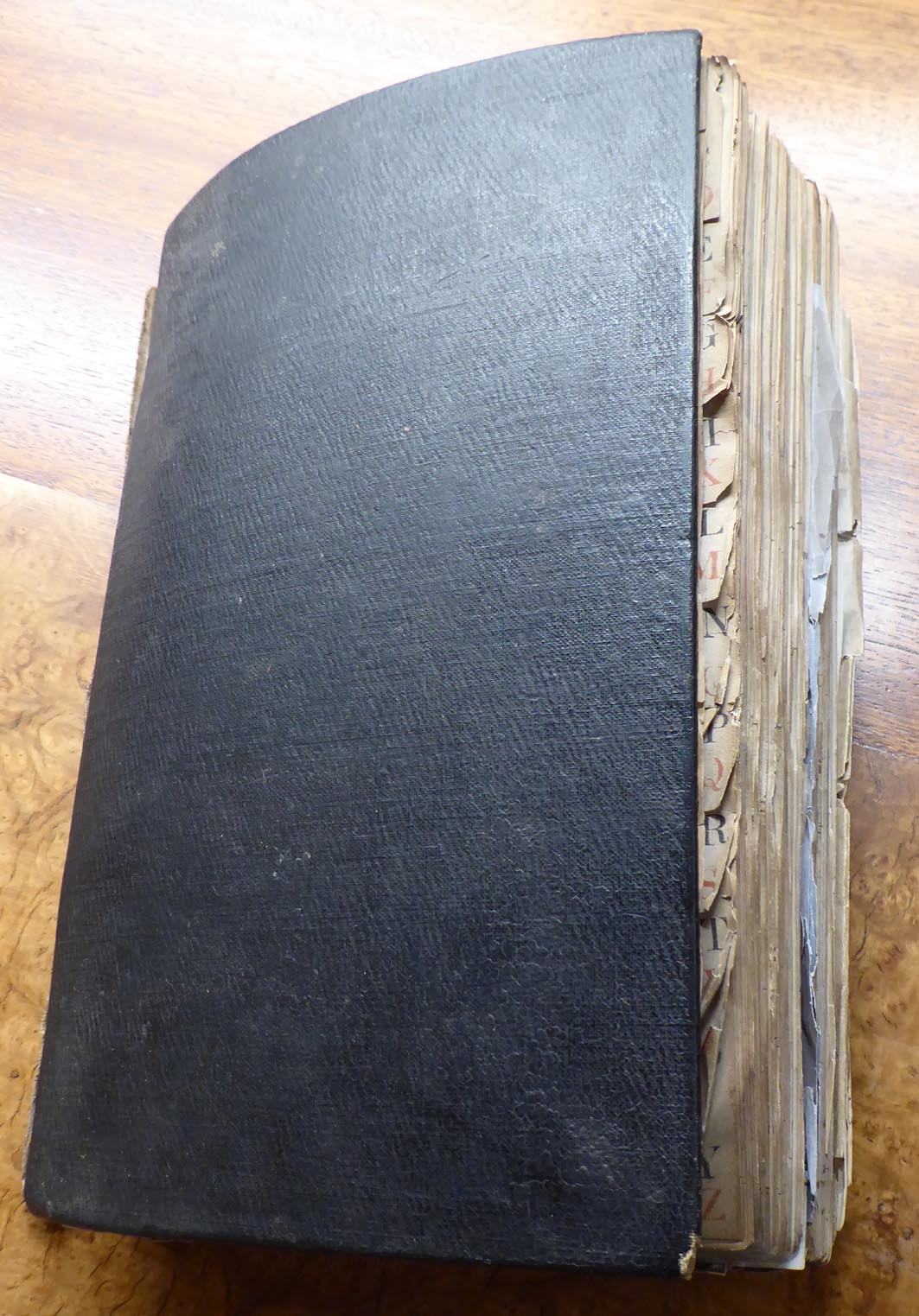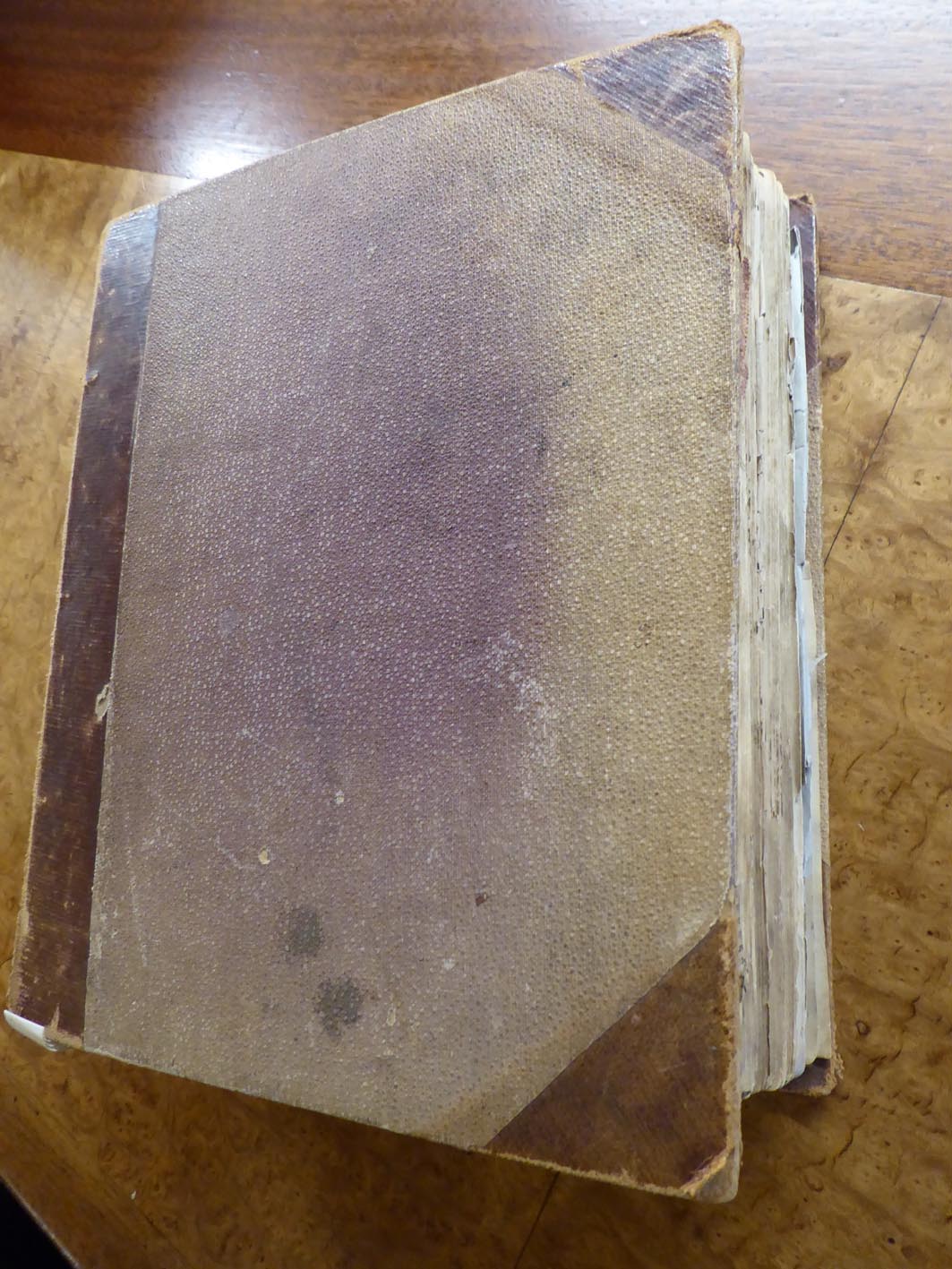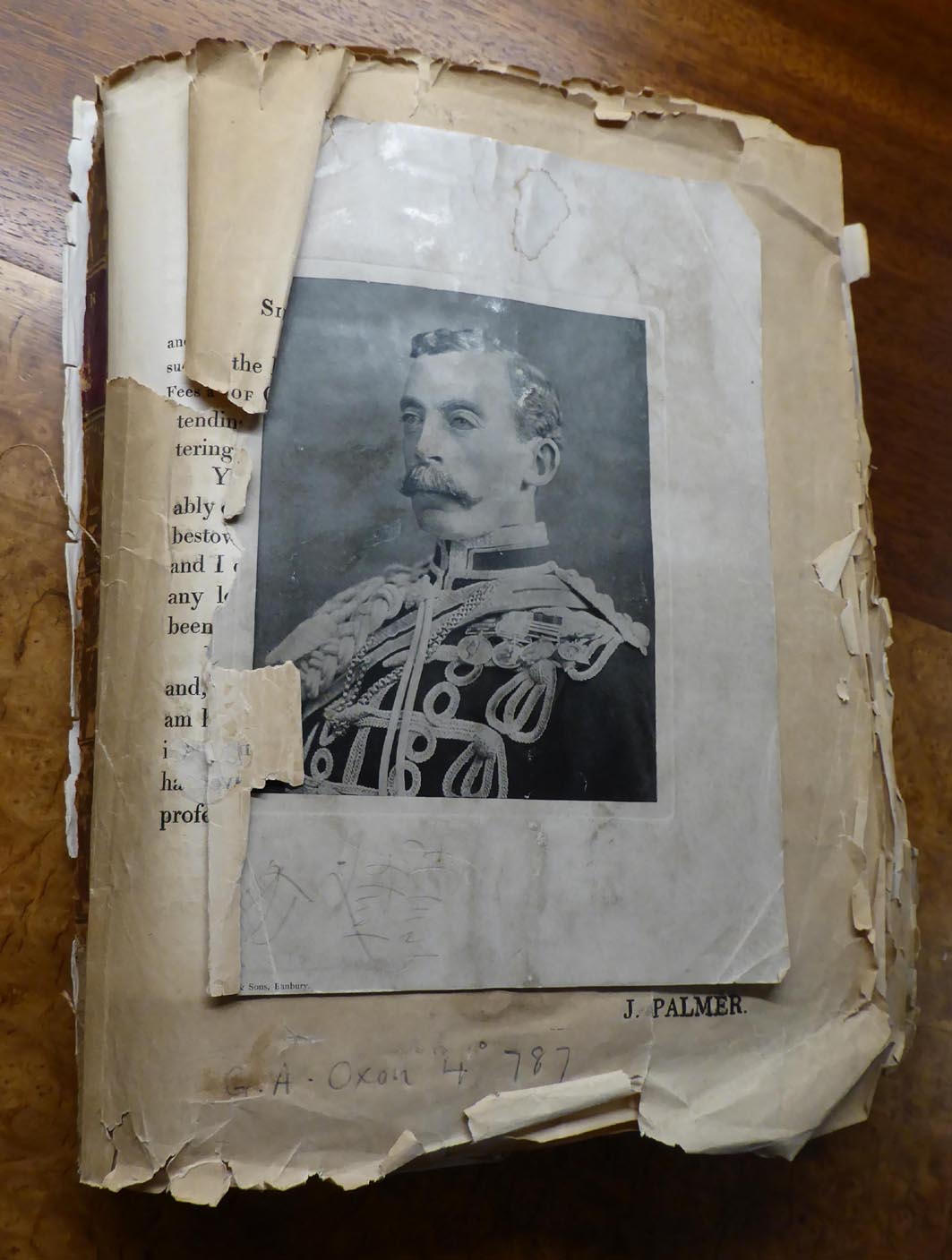Millennium Project
Deddington Scrapbooks 1836-1914
Compiled by George Coggins (1846-1920)
Three Volumes - Bodleian Library shelf marks G. A. Oxon 4o 785 - 787
Researched and transcribed by David French at the Bodleian Library

Image courtesy of the Bodleian Library
Click to enlarge
Introduction
George
Coggins was born in Deddington, the son of a carpenter, in 1846. He
must have shown exceptional promise, since by the age of 14 he had been
taken on as a Solicitor's general clerk. He qualified as a Solicitor
when he was 30, and practised in Deddington for more than 40 years until
his death in 19201,2 He became Clerk to the local Magistrates in 1886 and
Coroner for North Oxfordshire in 1892.
Coggins and his wife, Mary (née Holiday), moved to The Hermitage in Market Place in 1898.3 Mary did not enjoy good health, and she died a year later, aged 45. There were no children of the marriage. Apart from his various public roles, there were few aspects of life in Deddington in which George Coggins was not involved at some time.
Coggins was an avid collector of any printed
material which came his way relating to current or past events in
Deddington regardless of its apparent importance. The legacy of his
scrapbooks provides a remarkable insight into life in Deddington in the
second part of the 19th century and the beginning of the 20th century.
The scrapbooks are in a fragile state, Volumes 1 and 2 with broken spines and bulging with pasted materials (some rather tattered). Volume 3 is particularly tatty, as the binding is almost completely gone.
Deciding on how best to make the contents accessible was therefore problematic. Scanning all of the roughly 650 pages would be both physically difficult if not impossible because of the delicate state of the scrapbooks and, even if achieved, while it would provide facsimiles, they might not be easily digitally searchable.
The method decided on was to compile indices of the contents sufficient to convey a sense of the wealth of contemporary information that Coggins sedulously pasted into the scrapbooks, and to transcribe all the materials (e.g. handbills, programmes) which were not newspaper cuttings on the basis that the greater majority of the press cuttings are accessible online. Interestingly, instead of using scrapbook albums, Coggins recycled used legal record books for the purpose with the contents glued onto the pages of the host volume. He was adept in the art of invisible glueing. Volume 3 is the most fragile of the three scrapbooks as it is a legal handbook (Palmer on Costs) printed on thin paper, and both of the covers have become detached as can be seen in the image below.
1 His grave and that of his wife is adjacent to the NW corner of the church
2 Banbury newspapers carried reports of his death, obituaries and funeral
3 He also purchased Laurel House opposite from Alban Samman which was subsequently tenanted by the Chislett family
General
Click on a scrapbook cover thumbnail to enlarge it
Scrapbook no 1 (1855-1908)
Underlying client deposit account entries
10" x 6" x 4"
Scrapbook no 2 (1855-1888)
Section B - Transcripts of non-newspaper documents
9" x 7" x 2 1/2"
Scrapbook no 3 (1836-1914)
10" x 8" x 1 3/4"
A selection of images from the scrapbooks
Scrapbook No 1
folio 181 Parish Council election 1899
folio 229 Prospectus for
Deddington, Heyford, and Aston Benefit Building Society 1869
folio 241 Programme for Golden Jubilee Sports 1887
folio iii Viggers' Omnibus
timetable 1840
folio 82b Deddington Teetotal Census 1883
folio 254 Handbill for Sea Trip Excursion 1885
Scrapbook No 3
folio 14a August Bank Holiday
fête 1906
folio 41a Royal proclamation following death of Queen Victoria 1901
Editor's note:
This has been a major project requiring David to spend an average of a day a week for some three years transcribing the scrapbooks at the Bodleian Library and then spend a similar amount of time compiling it all into an accessible format.We have a lot to thank him for.
Still to be researched is quite how the scrapbooks arrived at the Bodleian in the first place.


